Home workouts have been on the rise as many choose the peace, quiet, and privacy of working out at home over the chaos of their local gym.
But even if you’ve been dedicated to kitting out your home gym to fit your fitness needs, there’s a good chance you’re still missing some key weight machines.
One of the most used—and least practical to own—is the leg press. Excellent for building strength in your upper legs, these machines are also large, heavy, and expensive.
But if you don’t have the room or budget for a leg press—or the desire to step foot in the gym—no worries. You can still get similar benefits from at-home workouts that will require nothing more than a mat and your own body. Three cheers to exercises without gym equipment!
Experts In This Article
Read on to learn the benefits of the leg press, which muscles they work, and the best leg press alternatives to try at home.
In This Article
Leg press benefits
1. It improves leg strength
“The leg press emulates one of the most basic acts of daily living, which is getting up from a chair,” says Skylar Henderson, CPT, certified personal trainer and owner of Vitality Fitness. “Every day, people use muscles that are strengthened by the leg press when you walk up stairs, stand up after kneeling, or get up from a chair. If someone exercises their legs using a leg press, all of these movements will feel easier and less taxing.”
2. It builds muscle mass
The leg press works multiple leg muscles, including your quadriceps, hamstrings, glutes, and calves—muscles that are important for running, jumping, and propelling the body through space during daily life, according to certified personal trainer Ben Jenks, CPT.
Because the leg press is a weightlifting exercise, it can also help to increase muscle definition if that’s what you are after.
3. It’s a low-impact exercise
Jenks also points out that the leg press is also a low-impact exercise, meaning it’s gentler on your joints than high-impact moves like running. This makes it suitable for people with joint pain or recovering from injury.
4. It boosts balance, stability, and explosive power
“The coordinated movement of extending the legs strengthens neuromuscular connections to help the body produce powerful, controlled movements,” Jenks says. This is another benefit to not only your fitness in the gym, but in your daily life.
Leg press muscles worked
“The leg press targets all the major muscle groups of the lower body,” Jenks says. “This includes the quadriceps muscles on the front of the thighs, which are responsible for knee extension, and the hamstrings on the back of the thighs are also heavily worked as they act to both flex and extend the knees.”
This exercise also works your butt (glutes) and calf muscles (gastrocnemius and soleus).
Best leg press alternatives
1. Air squat
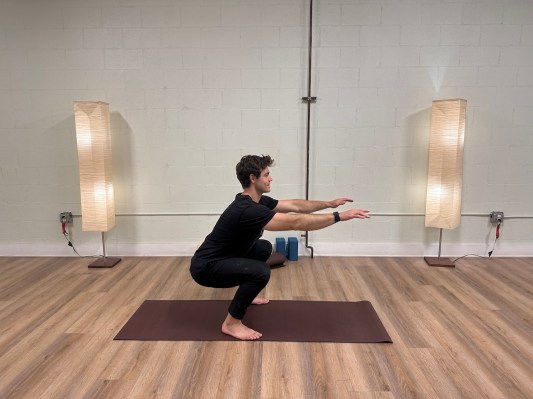
- Stand tall with your feet shoulder-width apart and your arms by your side.
- Extend your arms out in front of you and bend your knees and push your hips back to lower toward the floor. Pretend you’re lowering your body as if you were going to sit on a chair.
- Squat down as far as comfortable, or until your thighs are parallel with the floor.
- Push through your heels to return to standing.
- Repeat.
2. Reverse lunge
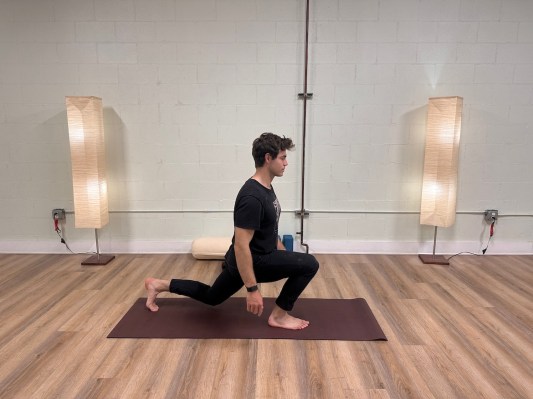
- Start by standing with your feet hip-width apart and your arms by your side.
- Step back with your left foot, landing on the ball of your foot.
- Bend your left back knee in a lunge position, lowering yourself down until both knees are at a 90-degree angle (or as low as you can comfortably go).
- Keep your trunk upright and your hips facing forward.
- Push off with your left foot to step your left leg back to the starting position.
- Repeat until all reps are completed on one side or alternate your reps, stepping backward with your right leg next.
3. Forward lunge
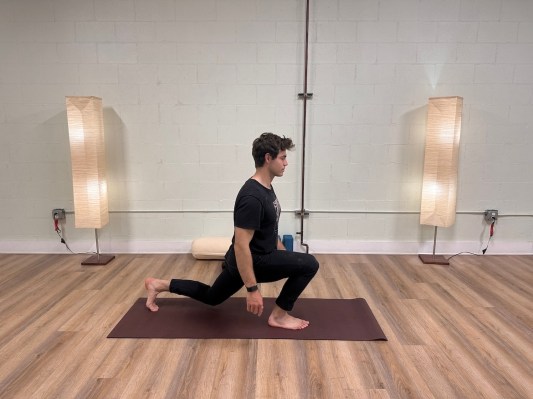
- Start by standing with your feet hip-width apart and your arms by your side.
- Step your right leg forward, bending both your front and back legs to a 90-degree angle.
- Keeping your chest tall, bend both knees and drop toward the floor with control. Keep lowering until your back knee is about an inch off the ground (or as low as you can comfortably go).
- Push through right foot to bring yourself back to the starting position.
- Repeat until all reps are completed on one side or alternate your reps, stepping forward with your left leg next.
4. Squat kick
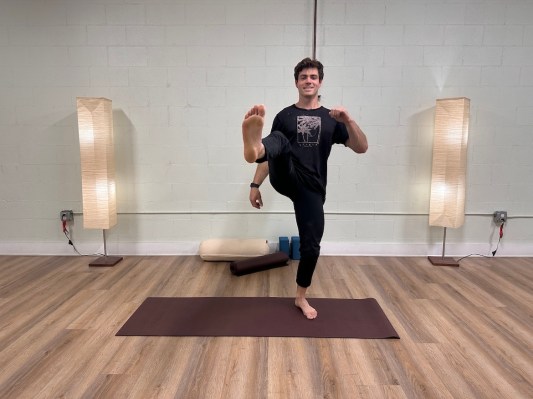
- Stand tall with your feet shoulder-width apart and your arms by your side.
- Extend your arms out in front of you and bend your knees and push your hips back to lower toward the floor. Pretend you’re lowering your body as if you were going to sit on a chair.
- Squat down as far as comfortable, or until your thighs are parallel with the floor.
- Shift your weight onto your left foot and push through your left foot to begin standing.
- As you stand up, kick your right foot out in front of you.
- Return your right foot to the ground so you’re back to starting position.
- Repeat, alternating which foot you kick out each time.
5. Bulgarian split squat
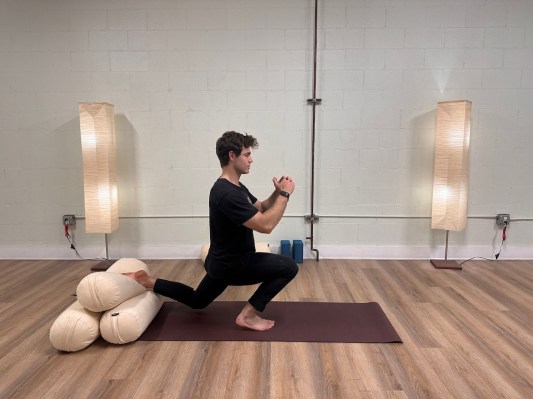
- Stand a few feet in front of an elevated surface (bench, box, sofa, chair, etc.) facing away from it.
- Reach your left foot back and place the top of your left foot flat on the surface. Your left leg should have a bend in it. You may need to hop your right foot forward so you can do a proper lunge.
- Bend your front knee to sink your hips toward the floor into a lunge as low as you can comfortably go.
- Push through the middle of your front foot to return to standing.
- Repeat until all reps are completed on one side, then switch legs.
Safety tips
The key to avoiding any injury while performing any exercise is making sure you’re properly warmed up before you begin. Henderson suggests spending at least 5 to 10 minutes doing dynamic stretching and mobility work.
“Listen to your body’s limits,” Henderson says. “If your body is telling you that your knee other joint is hurting, then make modifications to the movements, or go lighter. An injury will set you back and is never worth finishing a single workout.”
It’s also important to not lift too heavy, avoid hyperextension of your knees, maintain stability in your torso, and cool down effectively, according to Jenks. If you do want to push your limits, make sure you’re communicating with a training partner and utilizing them as a spotter, he says.
Finally, consider a plan for falling.
“Some movements, like the lunges or Bulgarian split squats, are precarious,” Henderson says. “Either place your hand on something sturdy to help you balance or do the movement on soft ground.”
FAQ
1. Is it necessary to do leg presses?
While doing the leg press is one of the best exercises to improve leg strength, there are many leg press alternatives that will give you similar results without using the leg press machine. Check them out above!
2. What is a good substitute for leg press?
Variations of squats and lunges are great leg press alternatives as they work similar muscle groups.
3. How can I replicate my leg press at home?
Perform bodyweight exercises like squats and lunges. These don’t require much space, and they can be done without any additional equipment.
Source: Well and Good







